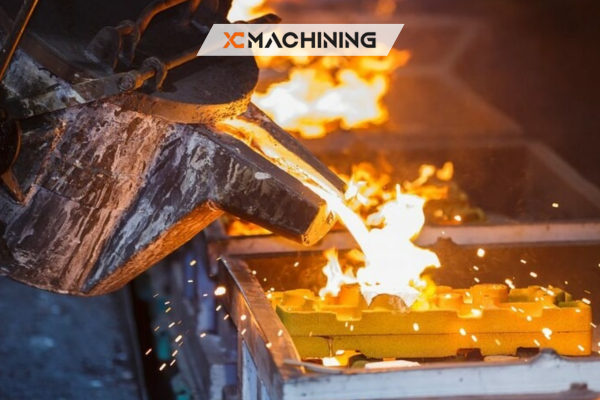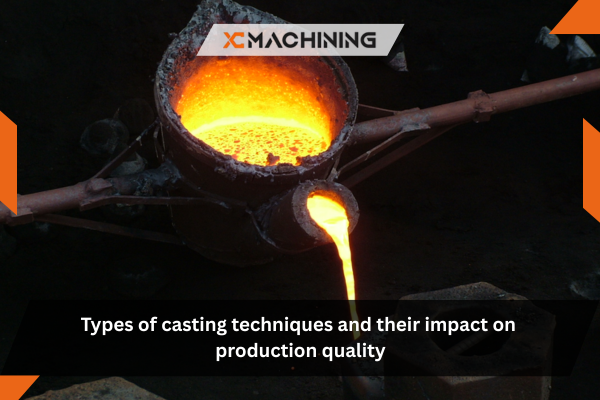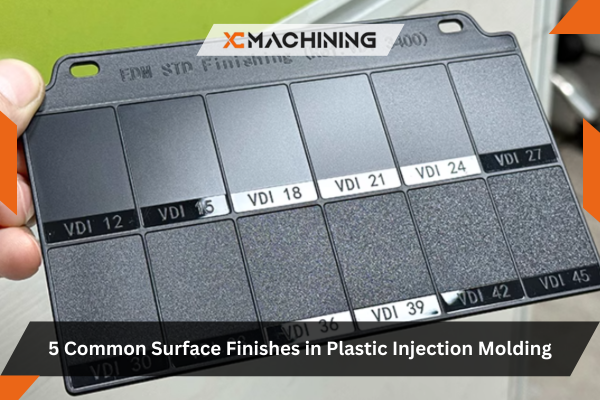Casting is a very significant production of parts and components in numerous industries. On automobile engines, construction shaping or aerospace, when it comes to production and fabrication, it is casting that defines the structures from the smallest machinery part to structural frames. What can be said about it its importance cannot be overemphasise since it is fundamental for the manufacturing of quality products in the right manner.
Thesis Statement: Use of casting techniques depends on the situation and they all have their sweet and bitter moments as well. This paper reveals that the technique of casting plays a great role in the production aspect of quality, cost and efficiency. It is against this backdrop that this article seeks to explain these techniques, their effect on the product and then balance the overall effectiveness between the efficiency of each technique in achieving different needs of manufacture.
Overview of Casting Techniques
What Makes a Casting Technique Unique?
Not all casting techniques are alike. From sand molds to very complex die casting , each method has its specific process, ranging from material, mold-making techniques to the cooling and solidifying of the liquid material used. These factors impact on the quality, cost, and speed of production.
General Impact of Casting
Although casting is often regarded as a highly effective technique for mass production, it does have its downsides. For instance, accuracy in Casting Techniques is not always guaranteed, and leftover materials are often produced during the process. Additionally, there are arguments over whether casting truly degrades the quality of the final product in terms of surface finish, dimensional accuracy, and material integrity.
Sand Casting
One of the oldest and most simple methods is sand casting techniques.This method involves the preparation of the mold from a mixture of sand and any binding material. After preparing this mold, molten metal is poured into it; then it is allowed to cool and solidify as desired.
Advantages:
- Versatility: As sand casting can accommodate massive and intricate shapes, its versatility can be utilized for producing small as well as large productions.
- Low Cost: Due to the use of sand and clay materials, that are low-cost, manufacturing through sand casting is affordable for producers.
Flexibility: Sand casting techniques is applicable to many metals, offering flexibility across different industries.
Disadvantages:
Surface Finish: The surface finish of sand-cast products often leaves much to be desired. Additional finishing steps are usually needed to smooth out the rough texture.
Dimensional Tolerances: Tight dimensional tolerances are difficult for sand casting, which makes this method challenging to produce accurate parts.
Effect on Product Quality:
The choice to opt for sand casting techniques would mainly be a compromise on the basis of cost. This method is inexpensive but it does not have such an ideal surface finish, nor is it very close in dimensional accuracy, making it hard to produce with quality that is required by precision applications.

Die Casting
The die casting involves forcing molten metal with high pressure into a molding services composed of steel. The work is mainly executed with the nonferrous metals; aluminum, zinc, and magnesium are some common non-ferrous metals where to a very precise scale pieces are produced.
Advantages
- High Precision: Die castings possess excellent dimensional accuracy and smooth surface finish which makes them perfect for parts required to be within strict limits.
- Speed: Because of the high-pressure injection process, the mass production cycles are very fast; therefore, it is an efficient process.
- Consistency: Die casting techniques is a process that is highly repeatable. Therefore, the produced parts are identical with almost no variation, which makes it critical for large-sized production runs.
Disadvantages
- The molds used for die casting are expensive and hence not viable for smaller or one-off production runs.
- The process is generally restricted to non-ferrous materials, and in many cases, the need for different types of material would prevent its use in those specific applications.
Impact on Production Quality:
Die casting and sheet metal can result in very significant improvements in precision and surface quality. It is excellent for production runs that have a very high volume requirement and which must be very consistent. Its high initial cost and material limitations make it not ideal for small batch production runs.
Investment Casting (Lost Wax Casting)
Process Description:
This investment is customarily called the lost wax investment casting techniques which technique begins as a wax pattern coated by ceramic and ultimately melted to leave a cavity into which is then poured metal.In its application, the technique is widely used in production of complicated and high accuracy parts.
Advantages:
- Complex Geometries: It is possible to form very intricate shapes, such as are impossible or challenging to form using other techniques.
- Surface Finish: It generates surfaces with minimal need to finish in the casting since it typically produces smoothness.
- Material Versatility: It is used on either ferrous and nonferrous metals, and also, alloys that can be moulded with the technique- thus ideal for most use applications.
Disadvantages:
- Expensive: The process requires certain materials and is a lot of labor, making the investment casting techniques process pretty costly, especially for low runs.
- Time-Consuming: The process takes way longer than other processes to be completed, making this process not ideal for same day or high volume orders.
Impact on Production Quality:
Investment casting techniques is more applicable to industries that demand precise parts with intricate geometries, such as aerospace and medical device manufacturing. It’s not very practical for a manufacturer with budget constraints and mass production requirements because it costs a lot and takes longer production cycles.
Shell Casting
Casting is an enhanced version of the shell casting, whereby the mold is prepared by pouring a fine mixture of sand and a binder that is later solidified to produce a shell-like structure. The molten metal is then casted into the mold to create the desired part. It is usually used for parts of small to medium sizes requiring high detail and precision.
Benefits High Detail:
- Shell casting, like investment casting, can produce very high details and accuracy to be used in complicated designs of components.
- The shell cast produces a better surface finish than sand casting techniques. As a result, it needs less post-casting processing.
Disadvantages:
- It can only be applied to small components as the shell casting process cannot be used in mass productions since the mold is not easy to scale for bigger parts.
- This process is costlier compared to traditional sand casting due to increased complexity of making the shell mold.
Effect on Quality of Production:
Shell casting offers a better surface finish and greater precision than sand casting. However, costs and size limitations will make it an unfavorable method for manufacturers to use where large parts need to be produced or money is severely tight. On the other hand, where high precision and small- to medium-size components are necessary, then shell casting techniques gives a positive result.
Centrifugal Casting
In centrifugal casting, molten metal is poured into a rotating mold. The centrifugal force from the rotation pushes the molten metal to the edges of the mold, resulting in a solidified casting. This process is mostly used for cylindrical parts such as pipes and tubes which need uniform thickness and density.
Advantages:
- Uniformity: The centrifugal force helps to achieve uniform thickness and density of the casting, which are significant factors in determining the final part’s durability and strength.
- Cost-Effective for Cylindrical Parts: Centrifugal casting techniques is particularly well-suited for cylindrical parts, with a reduction in material waste and, thus, costs.
- Drawbacks:The process can only be used to create cylindrical or hollow parts. Hence, the process cannot be used to create intricate shapes or shapes that require higher complexity.
- Labor-Intensive Setup: The centrifugal casting system takes longer to set up compared to other casting methods, such as sand casting, which might raise labor costs at setup.
Effects on Production Quality:
Centrifugal casting has a lower cost to manufacture a product in a cylindrical form with near-net uniformity and very low scrap generation. But because the technique has limited shapes that it can create, its ability is less than other methods, such as for companies needing higher-value products.
Its advantage, though, can easily be realized in areas with heavy use of high-quality cylindrical pieces such as pipes, valves, and tubing.
Impact on Production Quality:
Permanent mold casting techniques is a good balance between durability, precision, and cost. It is suitable for producing parts that require strength and dimensional accuracy. However, it cannot handle complex geometries, so it may not be the best solution for manufacturers needing intricate designs. It remains popular in industries where durability and repeatability are key.
Molding Machines and Automation in Casting
The role of automated molding machines has been growing increasingly important in the casting process both in quality and efficiency. Automated systems have revolutionized the casting techniques process by reducing human error, speeding up production rates, and increasing the overall consistency of parts.

Advantages of Automation:
Increased Efficiency:
Automation significantly speeds up the overmolding casting techniques process, allowing manufacturers to produce larger volumes of parts in less time.
Consistency:
- Mass produced machines can produce parts highly in a similar quality in order to meet the necessary requirement on the part.
- Reduced Human Error: Automation reduces the human errors that may occur through the manual handling or even through molding, hence lesser defects in the final products.
Impact on Quality
Parts would be produced with consistent quality due to the automatic molding systems in place, thereby minimizing variations from human interference. However, while automation improves on quality and efficiency, the machines have a high upfront cost, which can be a major deterrent for some manufacturers who are working on smaller scales.
Labor Considerations:
The emergence of automated systems in casting would also potentially lead to a decline in the work opportunities available in the conventional casting techniques setups. On the one hand, automation can improve productivity in casting. On the other hand, automation does reduce jobs within casting environments, hence opening debates among experts on how well technology benefits job opportunities within manufacturing-related sectors.
Conclusion
In conclusion, casting techniques is an essential manufacturing process with many techniques available, each offering different benefits and drawbacks. Techniques like sand casting and centrifugal casting are cost-effective for mass production of large parts or cylindrical components but can compromise on accuracy and surface finish. On the other hand, die casting and investment casting offer higher precision and finer details, which are more appropriate for high-precision applications in aerospace and medical devices. However, these processes are more expensive and require longer production times, which cannot be accommodated in low volume production.
The type of casting techniques technique has a significant impact on the quality, cost, and efficiency of production. Although automation and advanced molding machines significantly increased consistency and speed, they have associated drawbacks related to high upfront costs and labor displacement. Manufacturers therefore have to evaluate what their individual needs are and whether the requirements include large runs, tight tolerances, or complex geometries.
FAQs
1. Which is the least expensive casting process?
Sand casting is often the least expensive method, as it utilizes cheap materials such as sand and clay, making it well suited for high volume runs.
2. Which is the most precise casting process?
Die casting offers the highest precision with excellent dimensional accuracy and smooth surface finishes, making it best suited for parts that require very tight tolerances.
3. Can casting be used for both small and large parts?
Yes, casting methods for both small and large parts differ. Larger parts usually require the use of sand casting and centrifugal casting techniques while smaller and more intricate components make use of investment casting.





